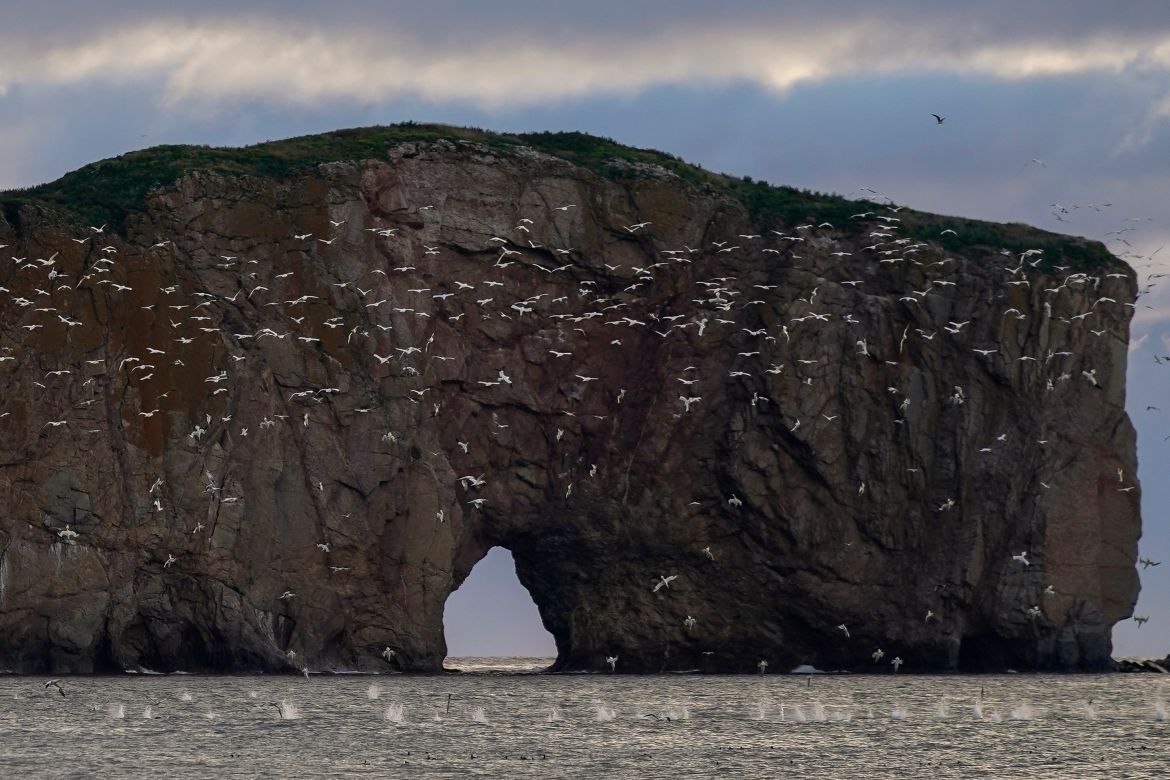In Pictures
Photos: Climate reshapes life for northern gannets on Canada isle
Bonaventure Island, close to the shore of Quebec, offers scientists a rare chance to study the effects of climate change on seabirds.

Scientists are tracking the threats to seabirds from climate change, overfishing and other perils wrought by humans.
Many species, though, are hard to study because they live in a marine wilderness or are scattered.
But not the northern gannets that breed on Bonaventure Island off Canada’s Gaspe Peninsula. The small island is close to shore and home to more than 100,000 gannets in the breeding season, making this the world’s second-largest northern gannet colony. What’s more, these birds are easy to approach.
Experts say there’s little question that global warming is reshaping the lives of northern gannets by driving fish deeper into cooler waters and sometimes beyond their reach.
Warming and rising seas and the erratic weather events fuelled by a changing climate are taking a heavy toll on seabirds. University of British Columbia researchers say seabird populations have fallen 70 percent since the mid-20th century.
Climate-related losses have, for example, hit albatrosses in the central Pacific, penguins in South Africa, and several species in the United States: common murres and Cassin’s auklets along the West Coast; puffins off the Maine coast; roseate terns off New England; and brown pelicans on the vanishing islands off southeastern Louisiana.
The struggles of many seabird species occur in marine wilderness far from humans. Those of the Bonaventure gannets, however, play out in plain sight, in a gift to scientists and the public, on the protected grounds of the Quebec government’s Parc national de l’lle-Bonaventure-et-du-Rocher-Perce.









